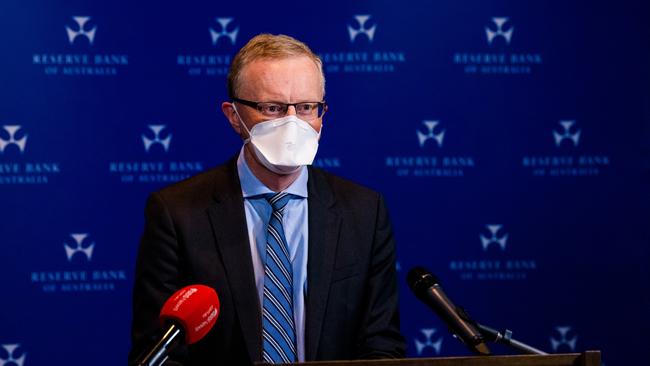RBA bets on post-lockdown bounce
Many economists had expected the RBA to scale back its weekly bond buying program.

Reserve Bank of Australia governor Philip Lowe has ploughed ahead with plans to wind back extraordinary monetary policy support from September, expressing confidence the economy will bounce back from lockdowns despite an “uncertain” outlook for the coming months.
Most economists had expected the economically damaging restrictions in Sydney and elsewhere would force Dr Lowe to reverse a decision made last month to scale back the RBA’s weekly bond buying program.
Instead, at Tuesday’s meeting, the RBA board decided to “continue to purchase government securities at the rate of $5bn a week until early September and then $4bn a week until at least mid-November”.
In a statement accompanying the decision to hold the cash rate steady at 0.1 per cent, Dr Lowe reiterated that “the economic recovery in Australia has been stronger than was earlier expected”. “The recent outbreaks of the virus are, however, interrupting the recovery and GDP is expected to decline in the September quarter,” he said.
“The economic outlook for the coming months is uncertain and depends upon the evolution of the health situation and the containment measures.”
But Dr Lowe said the experience to date had been that “once virus outbreaks are contained, the economy bounces back quickly”.
Dr Lowe said “some increase in the unemployment rate is expected in the near term due to the current lockdowns, but most of the adjustment in the labour market is likely to take place through a reduction in hours worked and in participation”.
The jobless rate fell to 4.9 per cent in June.
The RBA’s economists even upgraded their May growth and employment forecasts for 2022, reflecting the faster than anticipated recovery leading into the latest round of restrictions.
Dr Lowe said unemployment was now expected to fall to 4.25 per cent by the close of next year, rather than 4.5 per cent, before dropping to 4 per cent by December 2023. Growth in 2022 is anticipated to reach “a little over” 4 per cent, rather than the previous estimate of 3.5 per cent.
The RBA’s rosy outlook assumed “a significant share of the population being vaccinated by the end of this year and a gradual opening up of the international border from the middle of 2022”.
Dr Lowe said underlying inflation would reach 2.25 per cent by the end of 2023, and the governor stuck with guidance that the conditions to raise rates “will not be met before 2024”.
The decision comes as ANZ card data showed spending in Sydney over the weekend held at half of pre-lockdown levels, even as spending in Melbourne bounced back as restrictions eased in the city.
The figures supported hopes that spending, and economic activity more broadly, would follow the pattern of previous lockdowns and recover quickly once health measures were eased.
ANZ’s consumer confidence survey showed national sentiment lifted by 1.1 per cent last week as the lockdowns in Victoria and South Australia ended, despite pessimism in Sydney.
ANZ head of Australian economics David Plank said “while below the long-run average, overall consumer confidence is well above the levels seen during Melbourne’s long second lockdown”.
“This is consistent with the evidence provided by ANZ job ads that the economic impact of the current lockdowns is likely to be considerably less than in 2020,” Mr Plank said.







To join the conversation, please log in. Don't have an account? Register
Join the conversation, you are commenting as Logout